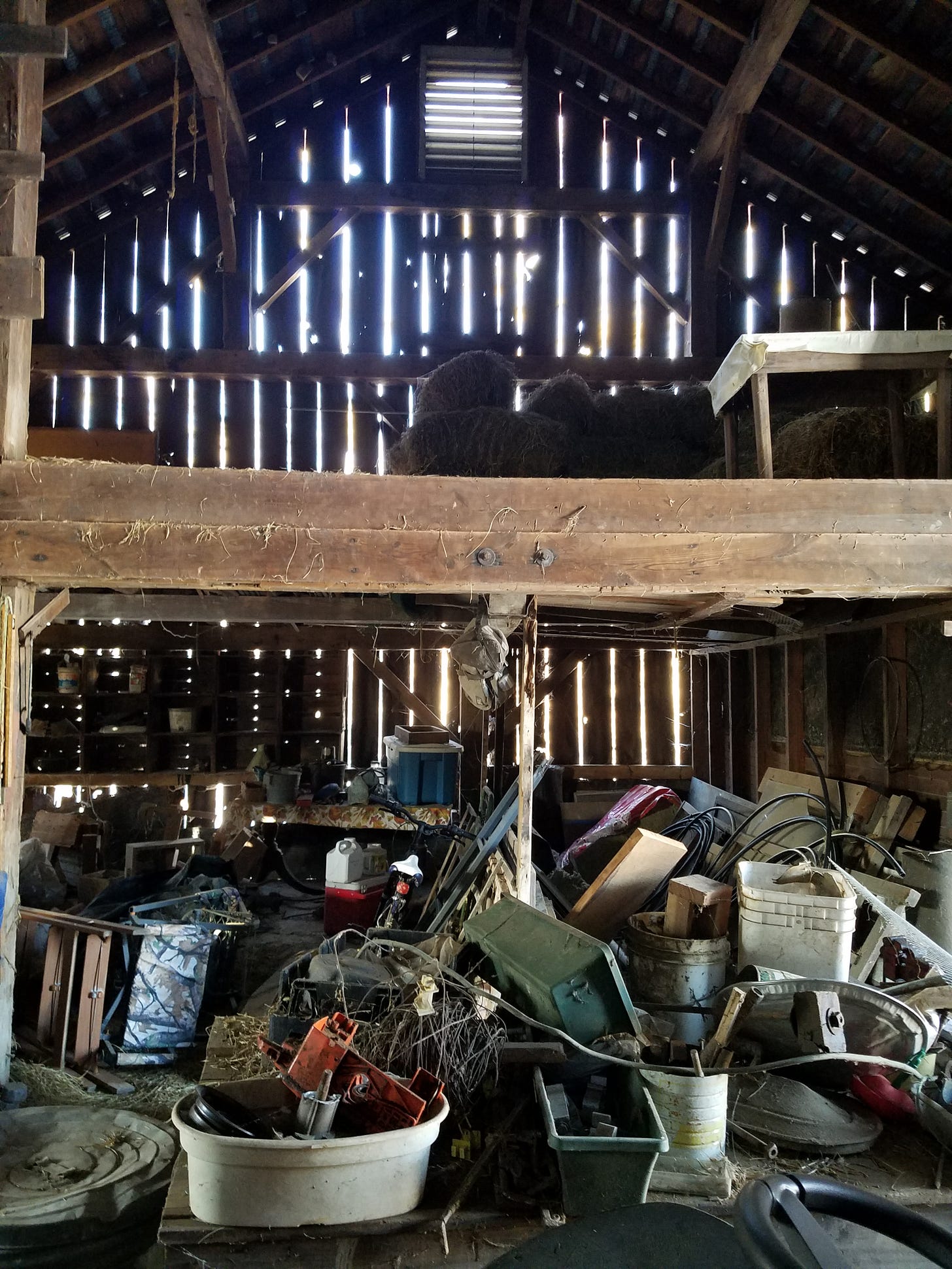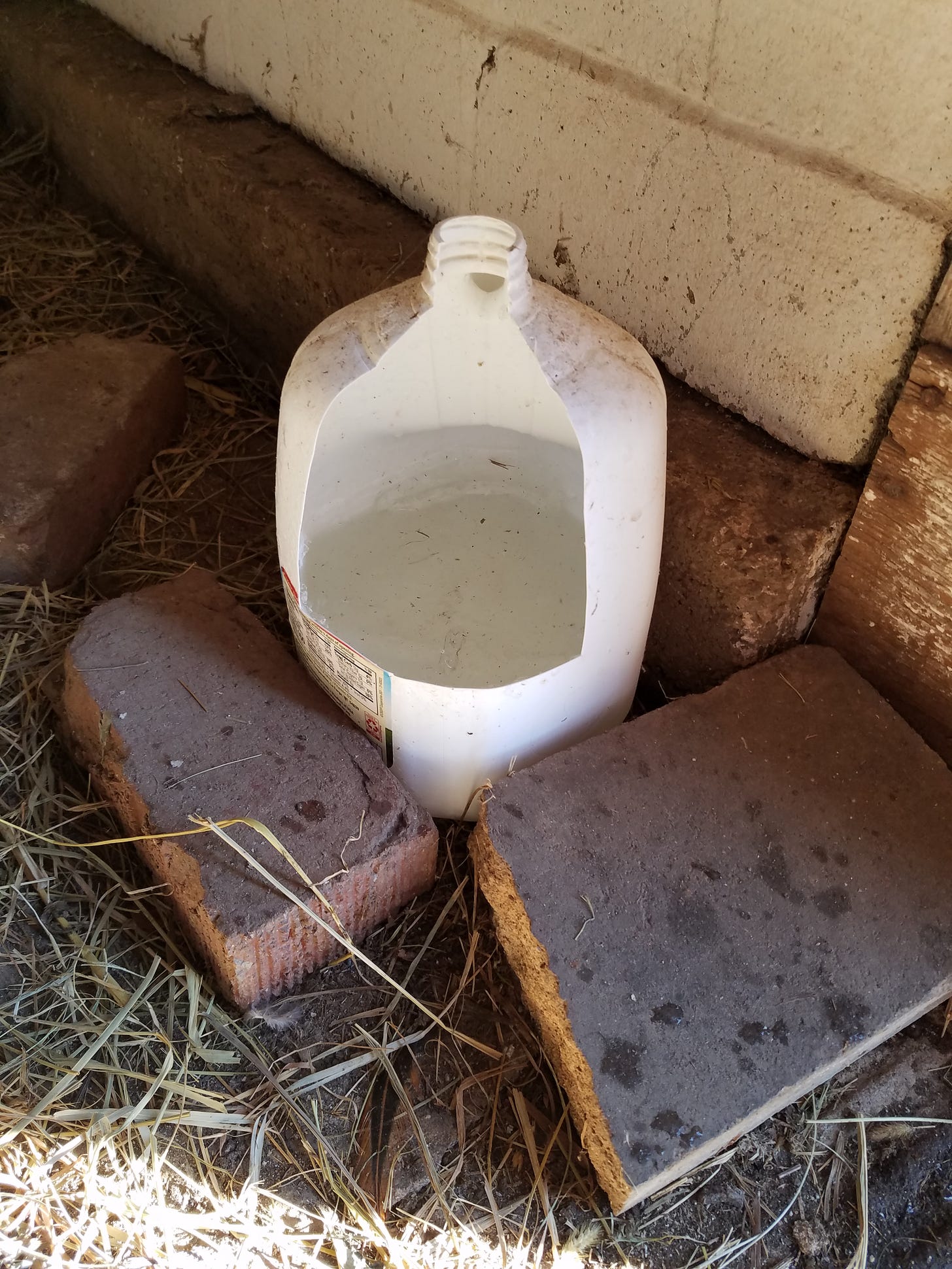Behind the scenes at Turtle Paradise
With photos of the beautifully mundane
After my previous post featuring favorite photos of the growing season, it occurred to me that I'm a lot like the beautiful people on social media with perfect lives, adorable well-behaved children, and immaculate homes. The only difference is that instead of carefully selected selfies, I post only the most colorful and pleasing images of the great outdoors taken here on the farm.
While in the text I strive for an honest presentation of the work involved, I might be guilty of sugarcoating the whole operation in the photos to attract more readers. Pictures of vibrant plants and cuddly or majestic animals will get more attention, more likes, more upvotes, and more followers than photos of the mundane. But does posting only the most eye-grabbing images aggravate the problem of fixation on appearance and the superficial, and create a false ideal of what one should be striving for in the garden or on the farm? (As a way to give readers a more realistic view of the place, this post features photos of everyday, unstaged scenes.)
Related to the topic of elevating appearances over substance is this small gem from Brunette Gardens that arrived recently in my inbox. I recommend checking out this post, but if you're short on time the gist is in the title: Never let the perfect be the enemy of the good. In short, don't get tied up trying to make something flawless or you'll end up wasting lots of time, and other important stuff won't get done. This piece relates to my thoughts this week because the most common reason we get sucked into spending too much time on a project is because we're trying to make it look right.
Time is often wasted on appearances when we are attempting to make something conform to an ideal based on popular aesthetics. For example, a lawn looks good when it consists exclusively of thin green blades of uniform height. Its value derives only from the degree to which it visually conforms to the ideal of a lawn. On the other hand, a pasture looks right when it has a mix of plants reaching varying heights, but its intrinsic worth has nothing to do with appearance. The grazier merely makes a visual examination to assess its readiness to perform its function—to assess if it looks right to be grazed.
This distinction is obvious and not difficult to understand. Farmers, homesteaders and gardeners actively practicing their craft are less likely to fall into the trap of wasting time on appearance for it's own sake. The insistent hunger cries of livestock, the failing fences, the trees down over the driveway, and the tomatoes rotting on the vine keep us focused and on task. But the author at Brunette Gardens points out another risk besides wasting time on looks instead of getting stuff done on the farm: never starting because we're waiting for ideal conditions.
For people who could and should be learning to be more self-sufficient, this pitfall is real. It can be a long wait for more land, or better land, or money for equipment, or all the knowledge you need. Meanwhile watching slick YouTube videos and reading beautifully illustrated articles can become an end in itself while we wait for conditions to be just right. These learning tools ostensibly help us to achieve dreams, but can sell a homestead aesthetic that is available to the very few, causing us to hesitate rather than do what we can with what we have right now.
I'm getting out of my depth here because I don't watch those videos, but in my imagination they present visually appealing scenarios that induce viewers to want the right look, which has been divorced from function and whose value exists in and of itself. I'm not bashing youtubers—for many this might be an unintended side effect of the need to produce highly attractive optics to engage effectively in the fierce competition for eyeballs. But it has consequences. You know someone somewhere is putting off getting hens while they save up for that cute chicken coop from Big Box Farm Supply that looks like a gingerbread house.
It's natural for humans to enjoy beautiful things, and I would be a hypocrite if my intent was trying to disuade readers from caring about looks. I'm obsessed with my perennial beds, but their value isn't only in their pretty colors, it's also in the wildlife they attract. They look right when covered in pollinators and when birds are feasting on their seeds. I would consider it success if I convinced someone to find pasture beautiful rather than lawn. The photos that accompany this post aren't meant to expose the ugly underside of the farm—quite the contrary. I find all these scenes beautiful because they have meaning beyond the superficial. The history of the flotsam of generations collected in the barn. The success story of the jerry-rigged. The lived-in look of a busy home whose inhabitants get stuff done. The evidence of real people doing real things. To be honest I would love to have that coop in the gingerbread style, but eggs from warm and dry hens in scrap wood nesting boxes are pretty darn good-looking when you want some breakfast. Even if there are lots of cobwebs.








Thank you! I really enjoy reading your posts, and this was a great one to get as the weather turns. To me, my garden/homestead is a paradise, but sometimes (especially in gray Ohio November) I wonder what others see. We often laugh at the random assembly of objects that appear on counters, in pockets, or beside barns…but these are all signs of home that is well lived in. I love seeing hands on permaculture here in Ohio, thanks again for sharing!
We’re so honored that our post “Never let the perfect be the enemy of the good” inspired you to write this!